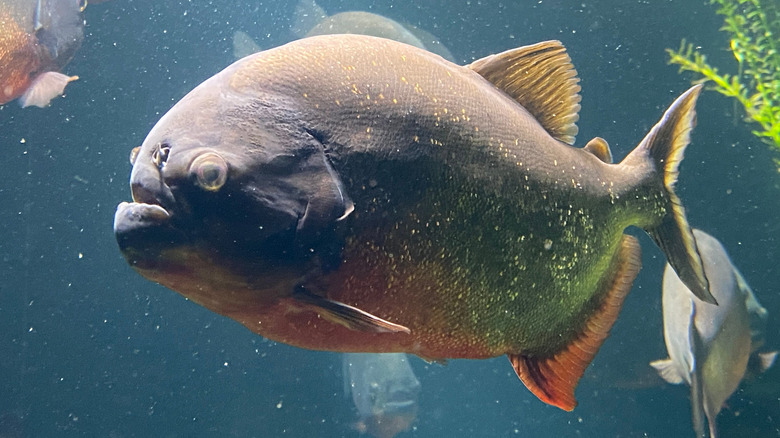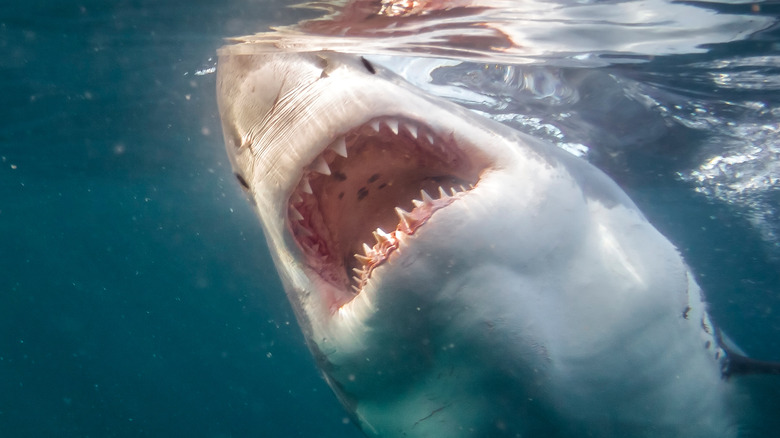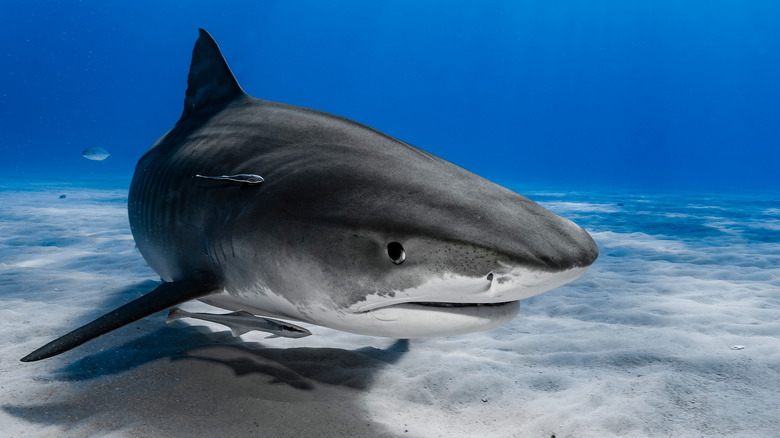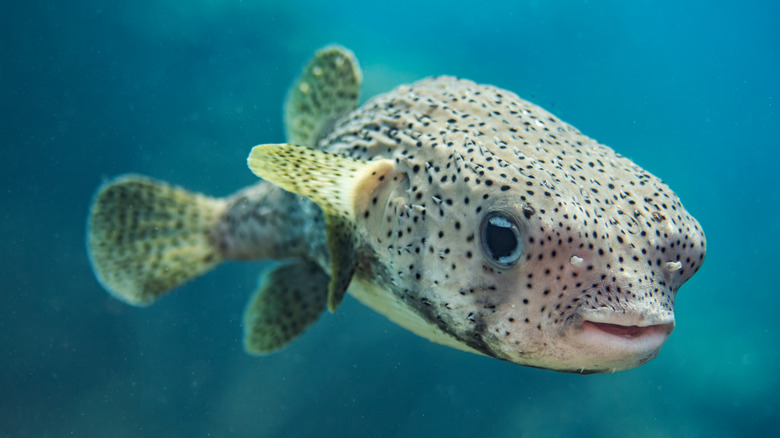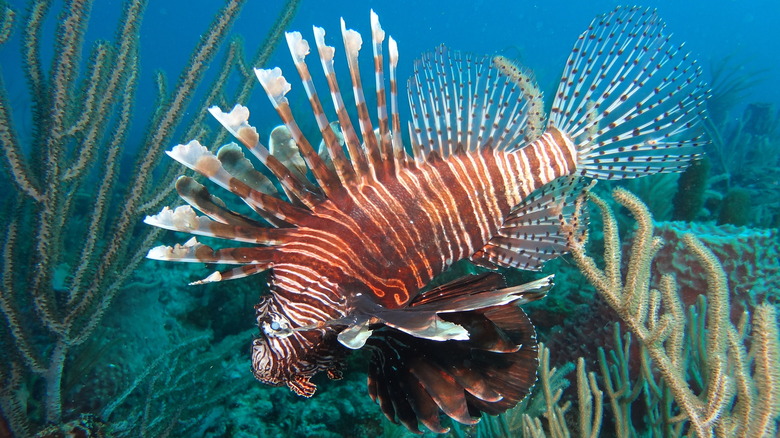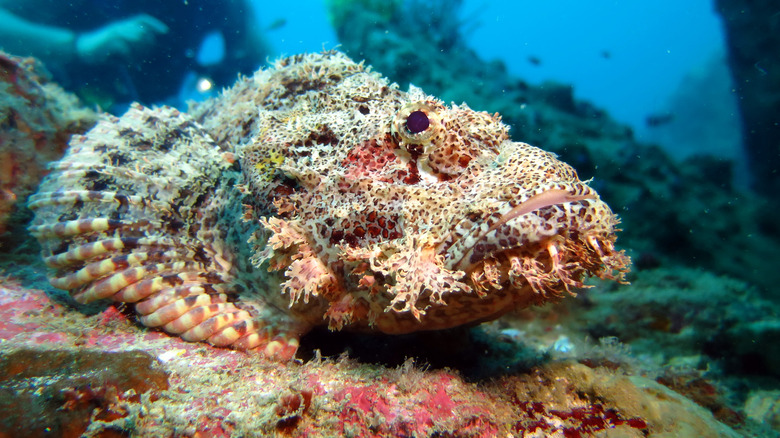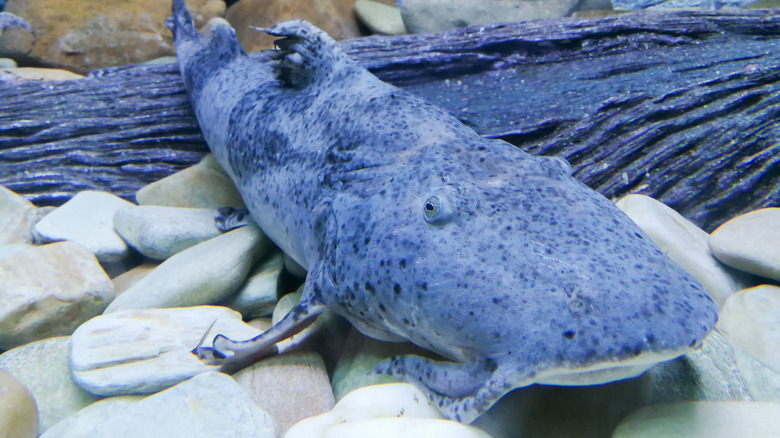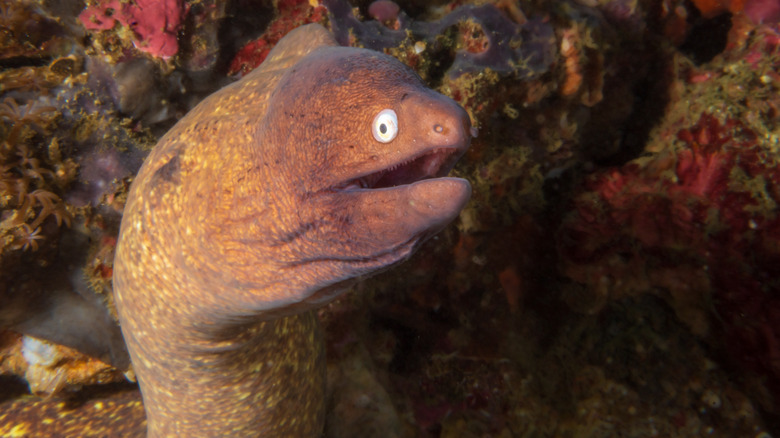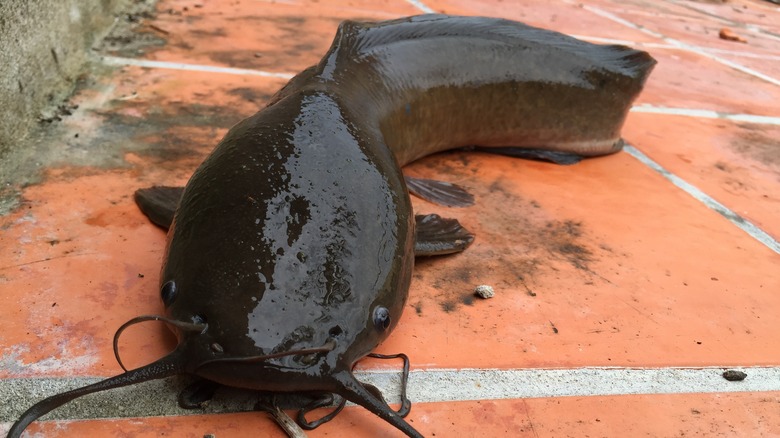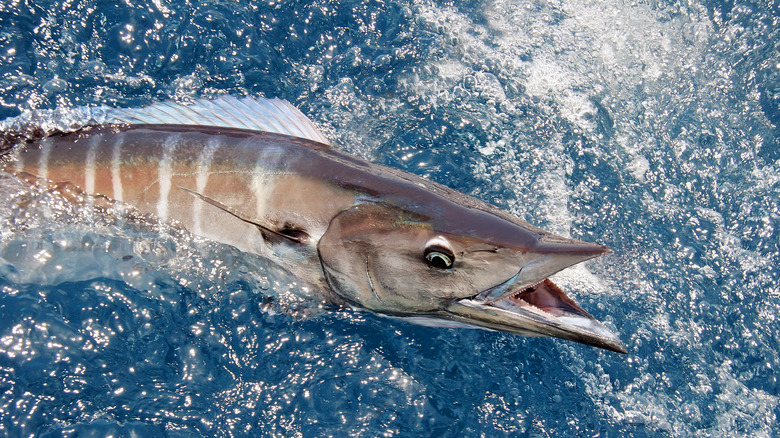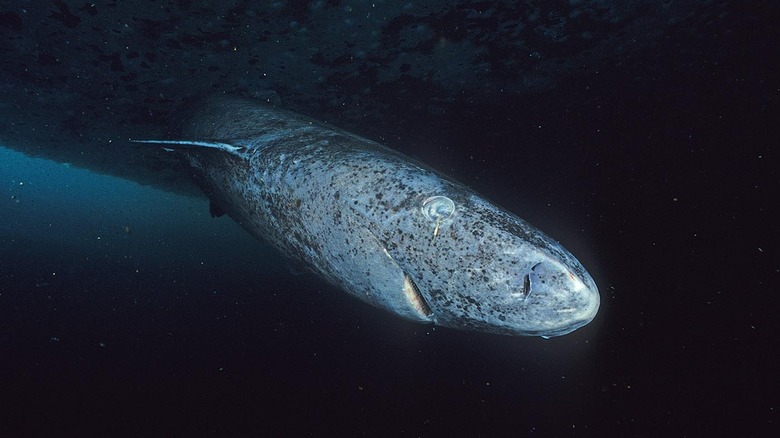The World's Most Dangerous Fish
When you think about dangerous animals you probably mostly think about things like tigers or crocodiles or cobras. You know, ones with claws or giant mouths or supporting roles on stupid airplane movies starring Samuel Jackson. You don't usually think "fish." Fish are for putting in an aquarium or yanking cruelly out of the water on a barbed hook and frying up in a pan. They don't really tend to fill us with fear. Except sharks, but who looks at a shark and thinks "eek, a fish?"
Well great news, as it turns out, an animal doesn't have to have claws or a giant mouth or be Samuel Jackson's co-star to be really, really dangerous. It can be small and pretty and even kind of tasty and still be lethal under the right circumstances. So what should you avoid in the seafood department of the local grocery store? Don't worry, none of these are for sale, well, except maybe one or two of them. The rest you'll only encounter while obliviously swimming along in the ocean, or in a river, or wherever. So beware of fish. Yes, fish. Specifically, these fish.
Let's just start with the obvious: the piranha
You already knew about piranhas, mostly because Hollywood likes to put them in swimming pools so villains can dangle heroes over them, you know, while they confess their evil plans and everything. But piranhas have kind of earned that reputation. They have razor-sharp teeth and Smithsonian says some of them can bite with 72 pounds of force. And, they have been known to devour humans, usually unfortunate people who fell into the river. But there is some doubt about just how many piranha victims were eaten alive vs. just becoming accidental food for an opportunistic pack of piranhas after they were already dead. Piranhas are really better at scavenging than killing, and it's likely a lot of piranha victims were drowning victims first, and fish food second.
Still, you don't want to go swimming in piranha land when the waters are low and the fish don't have a lot of dining choices, or when you just got a major laceration or something. These animals will bite you under the right circumstances, and those bites can be severe. They might even eat you if you're already dead, or maybe even when they deem you to be "mostly dead." So really the very best way to make sure you're not eaten by a piranha is, you know, to just not swim in piranha-infested waters. Or cross a Hollywood villain.
And, of course, the great white shark
It almost seems dumb to even put the great white shark on this list because duh, pretty much everyone knows that great white sharks are dangerous. If you don't know that, it's either because you've never seen "Jaws" or because you've never seen footage of great white sharks actually breaching like whales, only unlike whales they don't breach because they want to make humans go "Oh, look at the beautiful shark," they do it because they want to let the humans know who the real apex predator is.
While piranhas can maybe kind of sort of make an argument for being misunderstood, great white sharks deserve every little bit of their reputation. (Actually, shark experts will argue that great whites are just misunderstood, too, but that's because shark experts are party poopers.) Granted, shark attacks are actually less common than fatal lightning strikes, but great white sharks are the worst offenders. According to National Geographic, there are roughly 100 shark attacks annually, and something like a third to half of those attacks are perpetrated by great whites, so stop telling us great whites are totally innocent, shark experts.
Still, it's worth noting that sharks don't usually go around looking for human meat snacks. Bites are typically cases of "oops that's not a seal," or simple curiosity, because who amongst us doesn't savagely tear apart the things we're curious about? Anyway, don't swim with the great whites. It's a terrible idea.
Tiger sharks are also pretty terrifying
Though we do like to blame the great white for every shark attack we've ever heard of, great whites are not the only sharks who have fanboyed all over "Jaws" and are frequently guilty of committing copycat crimes. Tiger sharks are also pretty dangerous; in fact, they are considered the second-most dangerous shark in the sea. According to The Georgia Aquarium, which has got some in a tank just in case you want to see one in person without all of the mortal peril, tiger sharks are the largest in the "requiem shark" class and can grow up to 16 feet in length and beyond, which is roughly the length of a Dodge Durango, in case you want to try to picture that.
The problem with tiger sharks is really mostly a proximity thing— they attack humans because humans tend to like to swim in the waters that tiger sharks inhabit. Sharks that live in deeper waters don't really pose so much of a threat to people simply because we don't often get in their way. Though they would totally attack us if we did.
It actually may comfort you to know that there are only about a dozen sharks that fall into the person-eating category. The other 360 something species are mostly harmless, at least as far as humans are concerned.
The pufferfish is deadly and evidently also tasty
Pufferfish not only look ridiculous, they are also ridiculously dangerous. According to National Geographic, one pufferfish can take down 30 adult humans, though to be fair NatGeo doesn't say if these are 30 Arnold Schwarzenegger-type humans or like 30 Elijah Woods, which does seem like an important distinction. Pufferfish poison is 1,200 times as potent as cyanide, so it would be handy to have one of these things in a tank in your house just in case there's a zombie apocalypse and you need a weapon.
Don't worry, though, just because pufferfish are like one of the most toxic things on Earth doesn't mean you can't still eat one. You can order "fugu" in Japan, which is basically the seafood equivalent of playing Russian roulette. Chefs have to obtain a special license to prepare fugu, but that doesn't make eating the stuff totally risk-free. Roughly 50 people a year get sick from eating fugu. If you're one of the unluckies, you can expect numbness and paralysis to set in 20 minutes to three hours after your meal, and if you're very, very unlucky respiratory failure and death will happen shortly afterward.
Lionfish are dangerous in another way
You've probably seen lionfish in aquariums — they're like overdressed clownfish only without being cute in any way. Like the feline they're named for, you could say they're kind of regal looking, but that's where you have to draw the line.
Lionfish are some of the most dangerous fish in the ocean, but not for the reason you think. According to Healthline the showy spines of a lionfish contain a potent neurotoxin that's similar to the venom of a cobra. Unlike a cobra bite, though, the sting of a lionfish probably isn't going to kill you. And because they're not terribly aggressive, you won't get attacked by one if you happen to encounter it while out snorkeling.
What truly makes these fish dangerous is their mere presence anywhere but in the south Pacific or the Indian Ocean. Lionfish also live in the western North Atlantic, but they're unwelcome guests and probably ended up in those waters as a result of the aquarium trade. And because lionfish are predators, they don't mix well with the locals. They eat food that's usually eaten by commercial species like grouper and snapper. They also eat herbivorous species, which leaves fewer fish around to pick algae off coral reefs. Which of course means algae start to overwhelm the reefs. Fortunately, the locals have developed a novel way to help control lionfish: Serve them in restaurants. So this is one dangerous species you actually should be eating.
This thing can disguise itself as a rock
Lionfish sometimes get categorized with another venomous species known as the stonefish, which makes sense because they are all part of the huge and terrifying family called Scorpaenidae, and the similarity between that word and "scorpion" is not an accident. But think of the stonefish as the lionfish's less attractive cousin. Stonefish look an awful lot like the rocks they're named for — they're kind of dull and boring and they blend quite nicely in with the bottom of the ocean, so you'll be less likely to notice them while happily wading around in the shallows.
The main difference between the lionfish and its more boring cousin is that its more boring cousin is like way, way more lethal than the lionfish is. According to Oceana, the stonefish is the world's most venomous fish, and instead of delivering a merely painful sting it will deliver a sting that will kill you in about an hour. There is some good news, though — there's an antivenom that can save your life, as long as you can get to a hospital during that one-hour window between sting and death. And you don't have to worry about stonefish at all unless you live in or are planning to travel to the tropical seas in and around India and the Great Barrier Reef. Unless they become invasive at some point, then all bets are off.
Man-eating ... catfish
The scariest animals are the ones that can eat you, so let's travel to the Kali River in India where people have been attacked and eaten by — wait for it — giant catfish. Supposedly. In 1998, a 17-year-old kid was swimming in the river when eyewitnesses say something dragged him under the water. He was never seen again. A few months later the same thing happened to another kid. Then the perp took a nine-year break before killing more people in similar ways. Two eyewitnesses to two separate attacks described the animal as looking like an "elongated pig," which seems really weirdly specific for two eyewitnesses to come up with independently.
According to Africa Hunting, investigators ruled out three local crocodile species and actual elongated pigs, because pigs don't tend to do well in aquatic conditions. Then, they conducted an underwater fact-finding mission, which takes some giant, giant cajones actually, and spotted "man-sized" goonch catfish swimming in the same area where the attacks had happened. A six-foot-long specimen weighing 166 lbs was later pulled from the water, though investigators believed even larger specimens were still lurking.
So what was it that transformed these fish into monsters? Well, evidently the locals will throw corpses into the river, which helped the goonch catfish grow large and also gave them a taste for human flesh. At least according to the theory.
They're not shrieking eels, but close enough
You might be relieved to hear that the shrieking eels that tried to eat Princess Buttercup aren't a thing, though moray eels are and they're actually only marginally less terrifying.
According to Critter Science, some species of moray eel can attain lengths of up to 15 feet, so almost as long as a tiger shark, and they are ambush predators so you may not even see the thing coming when it decides to strip all of the flesh off of some appendage or another. Moray eels have backward-facing teeth, which are really great for turning your arm into a boneless hunk of person loin, so these really aren't the sort of fish you want to be waving minnows at in the hope of luring them out of their caves. Oh, and also they have pharyngeal jaws which basically means they have inner jaws that come out of their outer jaws just to make them extra-super terrifying.
These aren't just hypothetical bite scenarios, either — in 2004 Wilderness and Environmental Medicine published an account of a diver who received an "extensive crush avulsion injury" that practically cost him his entire arm. And a moray eel bite can also cause anaphylaxis, just in case you didn't already have enough reasons to avoid these things.
These catfish that walk around
You're probably still reeling from the knowledge that person-eating catfish are actually a thing, so our apologies in advance for adding catfish that walk around to your personal list of unholy aquatic terrors. Yes, it's true, there is a fish known as a "walking catfish," because it literally walks around on dry land and will come to your house with pamphlets. Not really that last part, but fish that walk do kind of go against all that we understand about nature, which makes them pretty scary.
The good news is walking catfish aren't dangerous in the sense that they will attack you or bring you information that you didn't ask for, they are dangerous because of how easy it is for them to move from pond to pond and decimate and eat all the current occupants. The walking catfish comes from Asia where it is an important food species, but in America it's a dangerous invader. According to National Geographic, it was first imported into Florida by fish farmers in the 1960s, and it promptly just started walking out of the fish farms into other ponds and 10 years later it was in like 20 counties.
Walking catfish aren't terrible for ecosystems because native birds like to eat them, but when they get into fish farms, they can cause a lot of damage. So the danger they pose is really more economic than anything, but also they're fish that walk around so just eek.
A fisherman's dream, or potential nightmare
Anyone who fishes will tell you that sometimes fish get loose on deck and savage everything in sight before diving headfirst back into the water, to linger only in stories told by the anglers who caught them. It's called a "big one that got away" story, and it's the reason why anglers will never wear body cams.
Sounds like mostly tall tales, but there are actually some fish that can cause serious damage if they're hooked and then hauled into a boat without the proper precautions, you know, like shooting the thing in the head with a cannon just to make sure it's good and dead. The wahoo is famous for this — according to the Florida Fish and Wildlife Conservation Commission the biggest wahoo on record weighed nearly 160 pounds, and they don't actually think that's the biggest one in the water, either. Some of these monsters might grow up to 200 pounds or more.
So when you catch one, the sheer weight of a fish that really does not want to be on your boat is enough to pose a terrifying threat to your life, but add to that the wahoo's impressive set of teeth and you may want to just stick to bass and rainbow trout. Wahoos are predators with super-sharp teeth that they use to hack up their prey prior to eating it, sort of like what the chef at a Japanese steakhouse does only with way less fancy.
This fish will hurt you slowly
The tilefish could be thought of as the psychopath of fishes, because of the way it will hurt you very, very slowly while it watches and chuckles to itself. Actually, it can't really chuckle to itself because you ate it and that's why it's hurting you.
In their pure, unpolluted state a tilefish is actually a nice, non-poisonous nutritious piece of fish that is particularly delicious when cooked with butter and garlic. Unfortunately, it's also the most mercury-contaminated fish in the sea — each four-ounce serving contains 219 micrograms of mercury. Compare that to the runner-up (shark), which contains about 68 micrograms less than that.
The kind of mercury that gets into your seafood comes from atmospheric pollution. According to Huffington Post, the mercury gets washed into the ocean when it rains and then it accumulates in the tissue of the fish that ingest it. Too much mercury-contaminated fish may damage your nervous system or your heart, and it can also mess with your immune system. If you're pregnant, it can harm your unborn baby.
The good news is, tilefish that live in the Gulf of Mexico are the worst mercury accumulators — if you stick with Atlantic tilefish you're less likely to be gobbling down a dose of mercury with your evening meal.
This one is a runner up because ew
Greenland sharks are not like great whites or like tiger sharks in that they are not at all aggressive, live in freezing cold water, have parasites attached to their eyeballs and can live to be like 400 years old. (According to the Guardian, this makes them the oldest vertebrates on the planet.) These sharks are dangerous because they are poisonous, and also because Icelandic locals love to ambush unsuspecting tourists with rotten pieces of them served on toothpicks.
If you pull a Greenland shark out of the ocean and try to have it for dinner, first of all, you're not a very nice person because that thing was like older than George Washington, and second of all, a Greenland shark has trimethylamine oxide in its tissues that will make you severely intoxicated, but not in a good way. At some point in Icelandic history someone thought, "Hmm, what will happen to this meat if I bury it in gravel for four months until it rots and then try to eat it?" And then instead of laughing at that awful, awful, idea they actually tried it and hakarl, the national food of Iceland, was born. Evidently, "fermenting" the meat neutralizes the poison, so, yay? Though to be fair, modern hakarl seems mostly to be used as a torture device against unsuspecting tourists rather than as an actual delicacy you can order in a seafood restaurant. Bon appetit!

